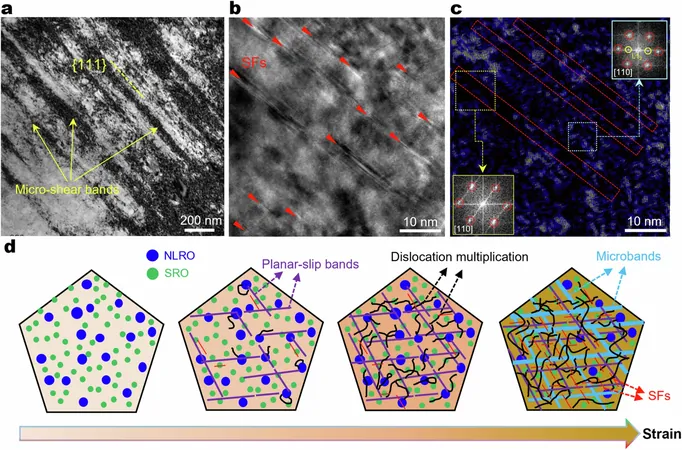
Revolutionary Alloys Engineered at the Atomic Level to Defy Extreme Cold
2025-09-12
Author: Jia
New Breakthrough in Alloy Technology
Deep space exploration and the handling of super-chilled fuels require materials with exceptional durability. Most metals become fragile and prone to breaking at frigid temperatures, but groundbreaking research is now paving the way for alloys designed to withstand these extreme environments.
Defying Traditional Metal Strengthening Methods
Traditional methods like precipitation hardening—where tiny hard particles are created within metals to enhance strength—often fail in extreme cold. At such low temperatures, metal ductility—the ability to bend and stretch without breaking—diminishes, leading to sudden fractures.
A Game-Changer in Alloy Design
A recent study published in Nature unveils a revolutionary approach to alloy design, enabling the development of metals that retain their toughness and strength, even at icy temperatures. The innovative technique involves creating alloys with two distinct atomic structures: subnanoscale short-range ordering (SRO) and nanoscale long-range ordering (NLRO).
Self-Assembly of Atoms for Maximum Strength
By meticulously controlling heat treatments and mechanical shaping, researchers facilitated the self-assembly of these atomic structures. This process led to the creation of a cobalt-nickel-vanadium alloy that boasts remarkable strength and resilience at temperatures as low as -186°C (87 K). Testing under extreme conditions revealed its ability to endure significant stress without compromising integrity.
Potential Applications in Space and Energy Sectors
According to Shan-Tung Tu, one of the researchers, "Our findings demonstrate the significant effect of dual co-existing chemical ordering on the mechanical properties of complex alloys, offering valuable insights for enhancing performance in cryogenic applications." With its incredible durability, this alloy holds promise for revolutionary advancements in space exploration and safer infrastructure in the energy sector, such as liquefied natural gas pipelines.
Unlocking New Possibilities with Atomic-Level Engineering
The atomic-level engineering techniques employed in this research could extend beyond cobalt-nickel-vanadium alloys, potentially giving rise to a new era of materials capable of thriving in the planet's harshest cold environments without sacrificing performance or safety.
 Brasil (PT)
Brasil (PT)
 Canada (EN)
Canada (EN)
 Chile (ES)
Chile (ES)
 Česko (CS)
Česko (CS)
 대한민국 (KO)
대한민국 (KO)
 España (ES)
España (ES)
 France (FR)
France (FR)
 Hong Kong (EN)
Hong Kong (EN)
 Italia (IT)
Italia (IT)
 日本 (JA)
日本 (JA)
 Magyarország (HU)
Magyarország (HU)
 Norge (NO)
Norge (NO)
 Polska (PL)
Polska (PL)
 Schweiz (DE)
Schweiz (DE)
 Singapore (EN)
Singapore (EN)
 Sverige (SV)
Sverige (SV)
 Suomi (FI)
Suomi (FI)
 Türkiye (TR)
Türkiye (TR)
 الإمارات العربية المتحدة (AR)
الإمارات العربية المتحدة (AR)